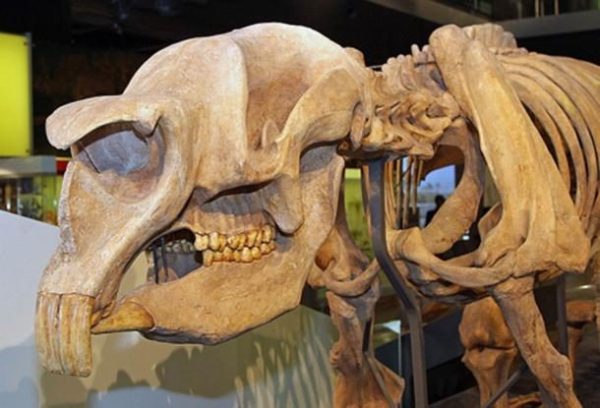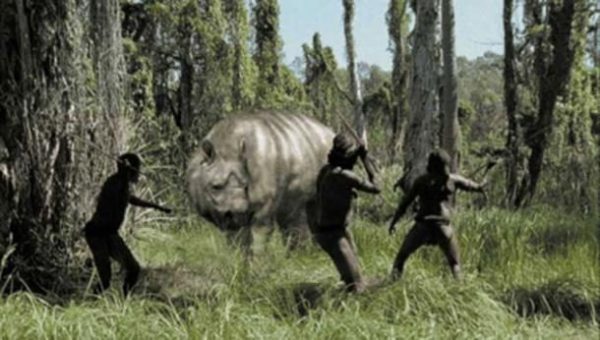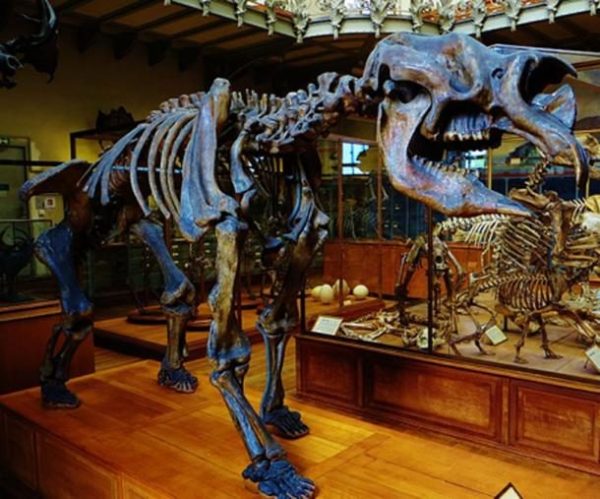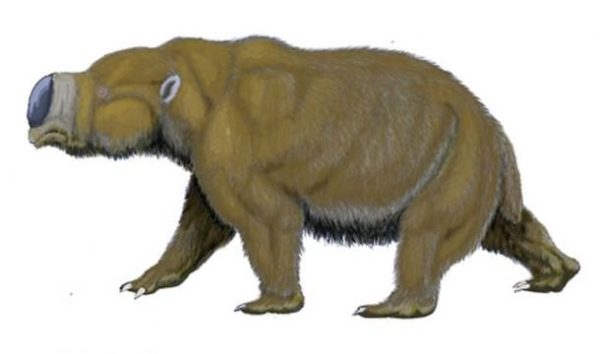Australia’s rich paleontological history unveils a captivating chapter through the colossal and intriguing Diprotodon. This gigantic marsupial, reigning supreme in Australia around 5.3 million years ago, offers a fascinating window into the prehistoric landscapes of the continent.

Discovered in the 1830s by Major Thomas Mitchell in a cave near Wellington, New South Wales, Diprotodon optatum, meaning “two forward teeth,” belonged to the group of “Australian megafauna.” These creatures were a staggering 130% larger in body mass than their modern relatives, such as wombats and koalas.
Imagine a wombat, but on the scale of a hippopotamus, weighing nearly two tons. With a body just under 13 feet in length, massive bellies, and peculiarly small feet turned inward, Diprotodon was an extraordinary herbivore that roamed the forests, woodlands, and grasslands of Australia, staying close to water sources and dining on leaves, shrubs, and grass.

Fossilized remains, including skeletons, skulls, hair, and foot impressions, tell tales of their existence, providing valuable insights into their diet, behavior, and environment. Cave drawings found in Aboriginal rock art in Quinkan traditional country further suggest their coexistence with humans.
Theories about the extinction of Diprotodon abound. Climate change, human hunting, and human land management have been proposed as potential causes. Some argue that an ice age in Australia led to prolonged periods of extreme cold and dry weather, while others point to human hunting as a significant factor.

The human land management theory suggests that Aboriginals, practicing “fire-stick farming,” altered the ecosystem by using fire to drive game out of the bushes.
The truth may lie in a combination of factors, with climate change, hunting, and land management all playing roles in the extinction of Diprotodon. The debate continues, emphasizing the complexity of unraveling the mysteries of prehistoric life.

Diprotodon’s extinction approximately 46,000 years ago remains an enigma, leaving behind a legacy of remarkable fossils and contributing to ongoing scientific discourse.
These giant marsupials, with their oversized skeletons and intriguing existence, invite us to ponder the ancient landscapes they once traversed, providing a unique connection to Australia’s geological and evolutionary tapestry.






